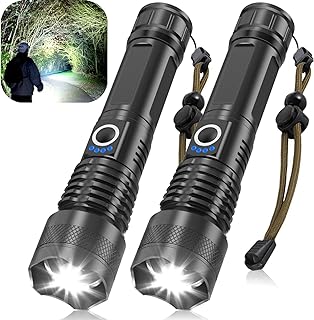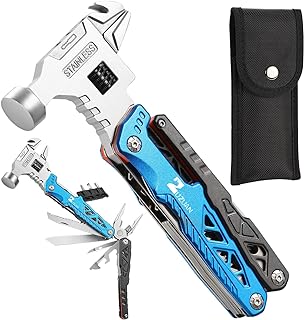5 important factors worth considering when looking for the best jungle knives
Having a reliable jungle knife by your side is essential when you’re exploring the wilderness. A good jungle knife is more than just a tool – it needs to be functional, durable, and able to handle whatever nature throws at you. Choosing the right jungle knife means finding one that is well-made, made of high-quality materials, and designed for the challenges of the outdoors. Jungle knives bring together precision and quality, helping you be prepared for whatever the wild has in store.
See our guide to the best jungle knives.
Blade material
When picking a jungle knife, the type of metal used for the blade is really important. Choosing good quality steel like carbon steel or stainless steel can make the knife last longer and work better in tough outdoor conditions. Carbon steel blades keep their sharpness well and are easy to sharpen, while stainless steel blades don’t rust as easily, which is great for damp jungle areas. It’s important to find a balance between hardness and toughness when picking a blade material so that the knife can handle tough jobs without getting damaged easily.
Also, think about what you’ll be using the knife for in the jungle when choosing a blade material. If you need a knife for cutting through thick plants, making shelters, or hunting, you’ll want a blade that can handle those tasks. And even though a good quality blade might cost more at first, the durability and reliability it provides in the long run are worth the extra money. Keep in mind that in the unpredictable and challenging jungle environment, the type of metal used for your knife’s blade can make a big difference in whether it’s a helpful tool for your adventures or a hindrance.
Blade length
When choosing a jungle knife, the length of the blade is important because it affects how well the knife can be used in different ways. A longer blade can reach farther and help with tasks like cutting through thick plants or preparing big animals. But long blades can be heavy and harder to control for detailed work, sacrificing nimbleness for power. On the other hand, a shorter blade gives better control and is easier to handle for delicate tasks. However, it might struggle with bigger or tougher materials, needing more effort and possibly being less safe. Finding a balance between blade length and how well the knife works is essential when picking a jungle knife, based on what tasks and surroundings it will be used for. A blade length that’s good for many things and finds a balance between reach and precision might be the best choice for handling the different challenges of the jungle. The right blade length will depend on personal preferences and what the knife will be used for, but understanding the trade-offs between length and how well the knife works is important for making a smart choice when buying a dependable jungle knife.
Handle material and design
When you’re buying a jungle knife, it’s important to consider the handle material and design. A good handle can make a big difference during your outdoor adventures. A strong handle not only feels good to hold, but also lasts a long time in tough conditions. Handles made from materials like micarta or G-10 provide good grip, even when wet, so you’re less likely to slip while using the knife.
The design of the handle is also crucial for how well the knife performs. A handle that fits your hand comfortably and securely can reduce tiredness when you use it for a long time. Features like finger grooves or a guard can make using the knife safer and more accurate. Remember, a well-designed handle can make cutting easier and improve your overall experience when you’re in dense vegetation or doing outdoor tasks. When choosing a jungle knife, focus on the handle material and design to get a reliable and comfortable tool that can handle the challenges of the wilderness.
Tang type
When choosing a jungle knife, it’s important to consider the Tang type, which is the part of the blade that goes into the handle. This is crucial for the knife’s strength and durability. Opting for a Full Tang jungle knife means choosing a knife with a solid metal construction that goes all the way through the handle, making it strong and stable. On the other hand, a Partial Tang knife has less metal in the handle, which can make it less durable and reliable.
The Tang type doesn’t just affect durability but also impacts the knife’s balance and how it feels in your hand. A Full Tang knife distributes weight evenly throughout the blade and handle, making it well-balanced and comfortable to hold. This balance can improve precision and control, making tasks like chopping and slicing easier and more enjoyable. In contrast, a Partial Tang knife may have uneven weight distribution, affecting maneuverability and overall performance.
Considering the Tang type when choosing a jungle knife is important for both practicality and performance. It ensures that your outdoor experiences are successful, safe, and enjoyable.
Sheath quality
When you buy a jungle knife, it’s important to consider the quality of the sheath that comes with it. The sheath is essential for keeping the knife safe and making sure it lasts a long time. A durable and well-fitting sheath not only protects the knife blade, but also helps prevent accidents when you’re carrying or storing the knife in thick jungle areas. By investing in a good sheath, you can protect your investment in the knife itself and have peace of mind during your outdoor adventures.
Additionally, a high-quality sheath can improve how well the jungle knife works overall. A well-designed sheath may offer extra features like different ways to carry the knife, additional compartments for accessories, or easy access during emergencies. Choosing a sheath that matches the knife’s design and purpose can make it easier to use the knife effectively in different jungle environments. It’s important to remember that a good sheath is not just an extra add-on, but a key part that affects how well your jungle knife performs and how reliable it is.
Conclusion
In the dense jungle, a knife is more than just a tool. It represents skill and survival instinct. Each knife has a story of resilience and resourcefulness, showing the bond between person and blade. In the wild, the knife is like a silent friend, helping its owner navigate through the untamed wilderness with respect and need, just like nature. Want more info on fruit squeezer for baby, check the best fruit squeezer for baby.



